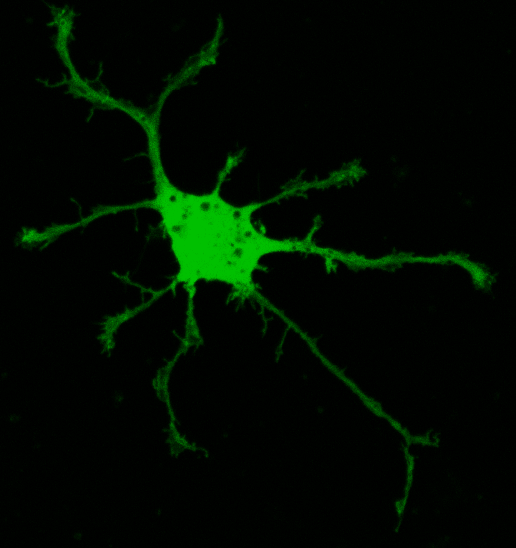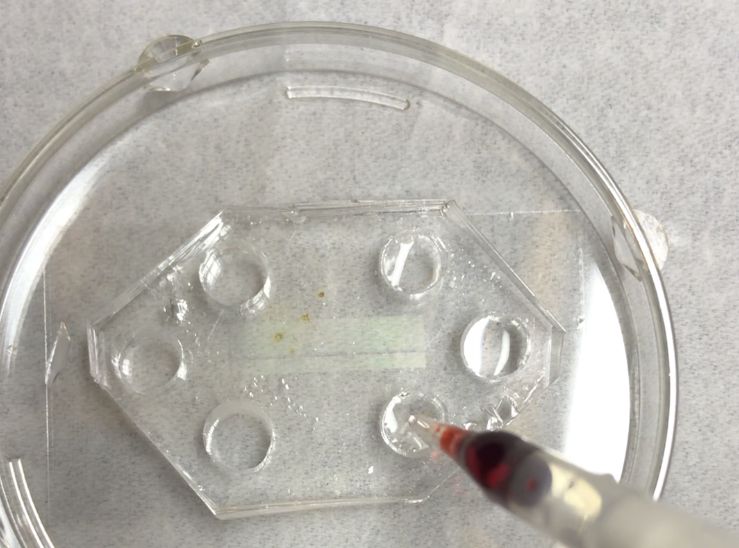 Miles Norsworthy joined the program as a third-year Cell & Developmental Biology student in January 2020 and is expected to graduate in 2023. He completed his undergraduate degree in molecular & cellular biology at the University of Illinois. His research lies in understanding how local signals shape the developing neuronal dendrite. He is also a US military veteran and first-generation college student.
Miles Norsworthy joined the program as a third-year Cell & Developmental Biology student in January 2020 and is expected to graduate in 2023. He completed his undergraduate degree in molecular & cellular biology at the University of Illinois. His research lies in understanding how local signals shape the developing neuronal dendrite. He is also a US military veteran and first-generation college student.
Norsworthy has presented his research at the 2020 and 2021 MBM Retreats, annual Cell & Developmental Biology departmental seminars, and the UIUC Neuroscience Open House. He currently serves on the MBM Student Leadership Council (2020-21). His community outreach activities through MBM include participating in a panel discussion with engineering students at Urbana High School.
He is completing lab rotations under the advisement of Martha Gillette and Gabriel Popescu. He has completed coursework in advanced topics in neuroscience, integrative neuroscience, mechanical engineering (theory & fabrication), and other advanced biology courses. In January 2020, he participated in the Beckman Institute Responsible Conduct of Research Seminar on “Research Support through People and Technology.” He has participated in an external research experience in Dr. Andrew M. Smith’s lab to study quantum dots and their potential to bind semaphorin3a in different redox conditions.
Research Highlights (in his own words):
Internal and External Redox Environments of the Hippocampus: Our lab hypothesized that axons maintain a more oxidized internal environment while dendrites maintain a more reduced environment. To test this hypothesis I treated rat hippocampal neurons derived from day old rat pups with a redox sensitive green fluorescent protein (roGFP) at three different time points. The results can be seen in figure 1. At each time point there is no significant difference between axons and dendrites in their redox state. I additionally separated neurons by the degree to which their axons were more or less oxidized compared to their respective dendrites. I compared these populations by arbor complexity using a Sholl analysis, overall dendrite length, and branching index (BI) and found no difference between the populations.

These results were unexpected and indicate that the internal environments of both axons and dendrites need to be maintained within a relatively narrow range for them to remain functional. What these results do not answer is whether or not the external redox environments affect axons and dendrites equally in response to Sema3a.
To test the Sema3a sensitivity of hippocampal neurons to redox conditions, I have been culturing neurons within microfluidic devices (μFD). These microfluidic devices will allow me to chemically isolate the neuronal cell bodies from their respective axons and dendrites. With this chemical isolation I can avoid the potentially toxic effects of engulfing an entire cell in reducing or oxidizing reagents as well as deliver Sema3a to the axons and dendrites alone.

My work so far with μFDs has strictly been with devices made of polydimethylsiloxane (PDMS); a clear, soft, easily worked with, non-toxic polymer that can be poured onto a mold. However, after attending the lecture by Dr. Noo Li Jeon I was made aware of premade plastic injection-molded microfluidic devices made specifically for use in neuronal culturing. I now have both PDMS and plastic devices and will compare their relative efficacy in ease of culturing and imaging. The already apparent benefits of the plastic devices includes uniformity between each device and ease of production compared to the multi-step process of pouring PDMS μFDs and multiple washes to remain free oligomers and heavy metals used in the process of curing the polymer.
Reflections on the Traineeship:
The Miniature Brain Machinery (MBM) program draws upon a diverse array of graduate students and faculty to bridge the gap between neuroscience and engineering. This broad coalition of researchers is beneficial to both the goals of the program and those within it. The MBM program’s goals are better achieved from this diversity by combining approaches unique to each field. These approaches are vital to solving problems that may otherwise stagnate when siloed within a single field. Similarly, the broad scope of the MBM program also benefits the trainees within it.
The first and most obvious benefit to trainees within the MBM program is the lecture series and workshops occurring on a weekly basis. Had I not been in the MBM program it is unlikely I would have been exposed to Dr. Jeon’s work with microfluidic devices. Regardless if I choose to use PDMS or plastic μFDs in the future, I will have confirmed that I am using the best platform for my ongoing experiments improving my results and the speed at which I obtain them.
The program has hosted a variety of researchers who have presented exciting work within a diverse array of fields. For example, Marianne Alleyne’s presentation about insect body plan innovation gave me pause to consider basic assumptions about brain architecture. In the same way that I can ask “What if spiders had a different amount of legs?” I can also ask “What if the function of the hippocampus was distributed throughout the brain?” or other basic questions.
Other basic questions that I may not have asked without the program include questions outside of research itself. A universally important category of questions is ethical questions. I found the way that the program organized the two lectures on ethics to be ideal with the first lecture from Jonathan Livengood providing a more abstract background for ethics in general. The second lecture on ethics by Michael Aref focused more on real world examples and how we might apply these abstract ethical concepts to our own research. While Aref’s focus was on working with humans (which none of the members of the MBM program use) his discussion is still relevant to work with animals and potential human research that may be done by current MBM trainees in the future.
When it comes to working with humans, who aren’t subjects of study, the MBM program has also been useful. The workshops on building healthy work spaces will be beneficial to all trainees regardless if they work inside or outside of academia. Being able to communicate and work with a group of people well does not happen by accident. Being able to foster an environment that is suitable for both desired results and the welfare of all involved is a highly curated activity that requires practice. One aspect of this work space curation is the idea of encouraging productive conflict. Often, when we think of a team working ideally together we think of a frictionless process where all members are working in perfect harmony. However, any group project is riddled with disagreements and obstacles to the collective goal. By building an environment that fosters productive conflicts all members of a team will feel comfortable and even excited to debate the merits of any and all decisions made by the team. With this vigorous and directed debate the most optimal solutions are far more likely to arise within a team leading to better results and more satisfied team members. Moving towards whatever follows my PhD I will find this framing of team interaction to be useful.
To move forward after my PhD I will have to be able to sell myself to future employers. Fortunately, the MBM program invited Colleen Tesher to speak to the trainees about the best strategies for marketing oneself. While every member of the MBM program certainly found these seminars to be useful I probably gained more than most. Having spent several years in the military the method of searching for jobs in the civilian world is still somewhat alien to me. While I find the act of self-commodification disagreeable Coleen’s classes made me face the fact that this is simply how the job market functions. However, the future isn’t the only thing that is alien to me.
The MBM traineeship has also helped me better understand those entering their undergraduate education from high school when I sat as a panel member for a questions and answers meeting for Urbana High. Hearing the questions and concerns of high school students preparing for their undergraduate education was especially useful for me given that I did not attend my undergraduate education directly after high school. Because of this delay certain concerns that would not have occurred to me were brought to my attention and will help me when teaching undergraduate students.
Finally, from a combination of the MBM program’s requirements and the travel restrictions imposed by COVID-19 I began working with Dr. Andrew Smith’s lab. Dr. Smith’s lab focuses on the production, optimization, and application of quantum dots. Quantum dots are nano-sized fluorescent semiconductors that can be used in place of various other dyes or biological markers. I first approached Dr. Smith after reading a recent paper published by his lab about the use of quantum dots to mark specific membrane bound proteins within the synaptic cleft of neurons. I found this paper to be relevant to my own project as the interaction of membrane bound proteins with their ligands is a crucial mechanism underlying my research aims. The use of quantum dots, which fluoresce an order of magnitude brighter than most organic fluorophores, offered me the opportunity to quantify the binding of semaphorin3a in different redox conditions. This will potentially elucidate any mechanism behind environmental redox signaling in neuronal dendrites and axons.
The MBM program has given me opportunities to improve both my work and myself in ways that I would have been unlikely to seek out on my own. The training grant has brought together a wide array of resources that will improve the lives and work of its members.

